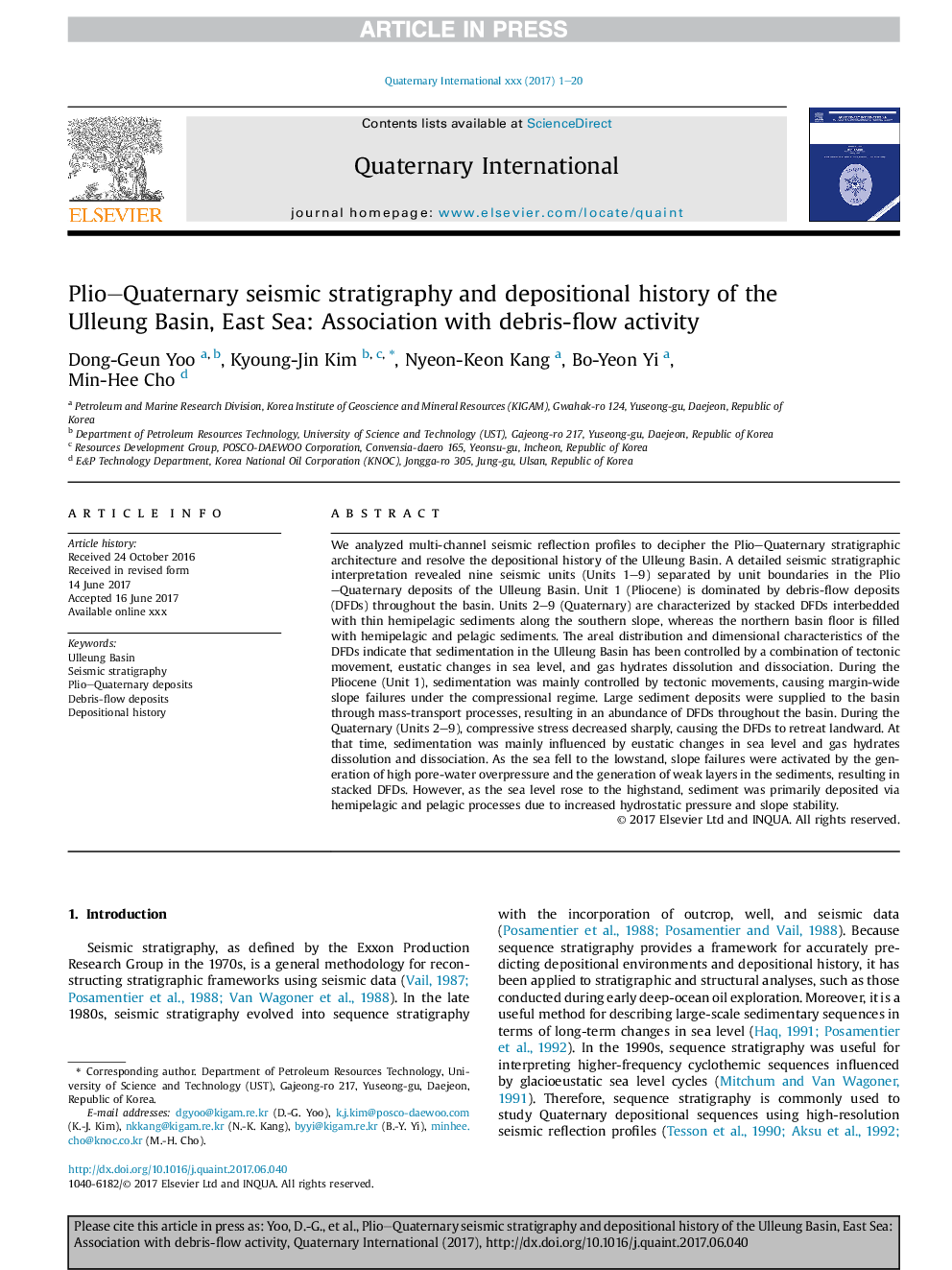| Article ID | Journal | Published Year | Pages | File Type |
|---|---|---|---|---|
| 7451212 | Quaternary International | 2017 | 20 Pages |
Abstract
We analyzed multi-channel seismic reflection profiles to decipher the Plio-Quaternary stratigraphic architecture and resolve the depositional history of the Ulleung Basin. A detailed seismic stratigraphic interpretation revealed nine seismic units (Units 1-9) separated by unit boundaries in the Plio-Quaternary deposits of the Ulleung Basin. Unit 1 (Pliocene) is dominated by debris-flow deposits (DFDs) throughout the basin. Units 2-9 (Quaternary) are characterized by stacked DFDs interbedded with thin hemipelagic sediments along the southern slope, whereas the northern basin floor is filled with hemipelagic and pelagic sediments. The areal distribution and dimensional characteristics of the DFDs indicate that sedimentation in the Ulleung Basin has been controlled by a combination of tectonic movement, eustatic changes in sea level, and gas hydrates dissolution and dissociation. During the Pliocene (Unit 1), sedimentation was mainly controlled by tectonic movements, causing margin-wide slope failures under the compressional regime. Large sediment deposits were supplied to the basin through mass-transport processes, resulting in an abundance of DFDs throughout the basin. During the Quaternary (Units 2-9), compressive stress decreased sharply, causing the DFDs to retreat landward. At that time, sedimentation was mainly influenced by eustatic changes in sea level and gas hydrates dissolution and dissociation. As the sea fell to the lowstand, slope failures were activated by the generation of high pore-water overpressure and the generation of weak layers in the sediments, resulting in stacked DFDs. However, as the sea level rose to the highstand, sediment was primarily deposited via hemipelagic and pelagic processes due to increased hydrostatic pressure and slope stability.
Related Topics
Physical Sciences and Engineering
Earth and Planetary Sciences
Geology
Authors
Dong-Geun Yoo, Kyoung-Jin Kim, Nyeon-Keon Kang, Bo-Yeon Yi, Min-Hee Cho,
